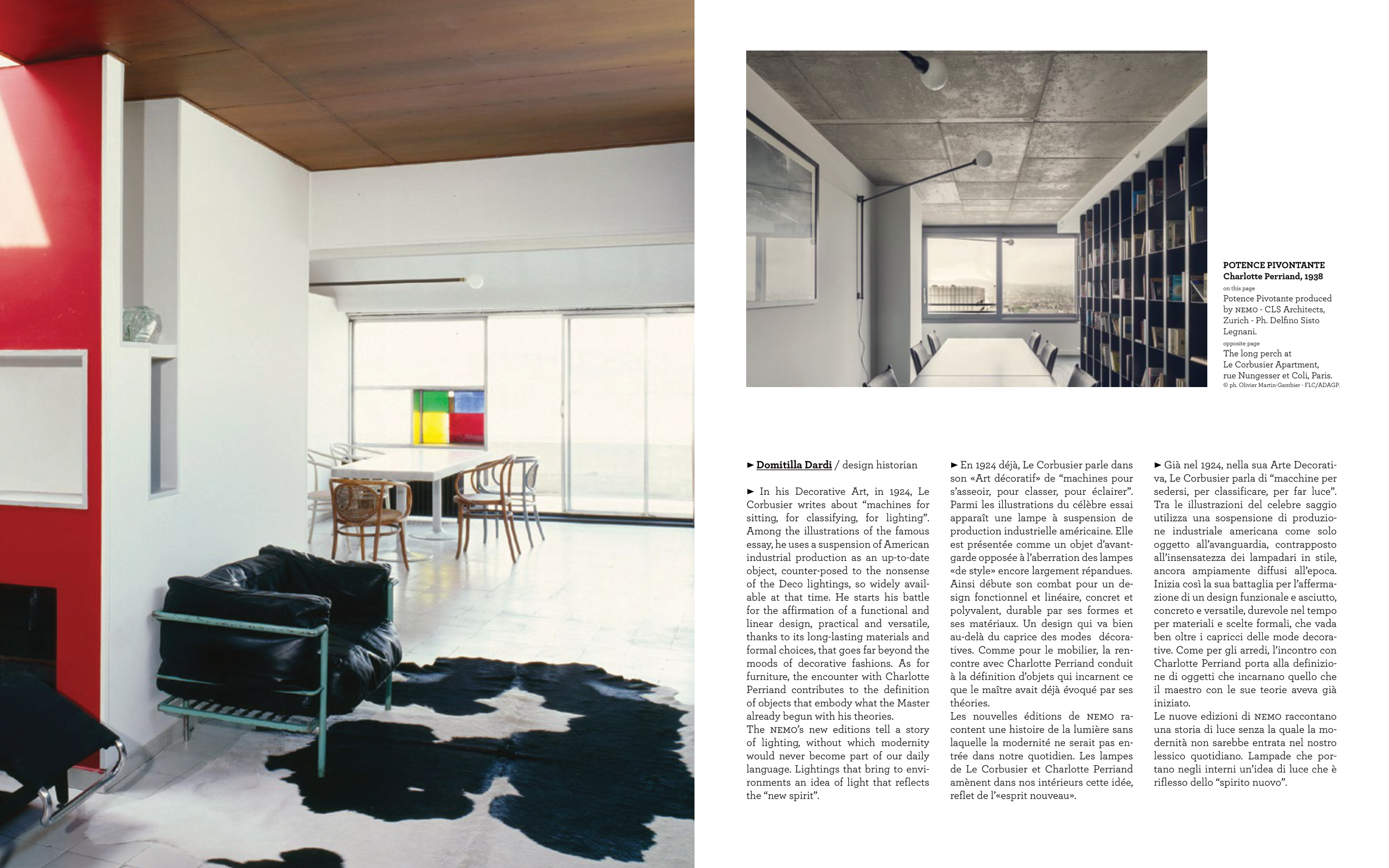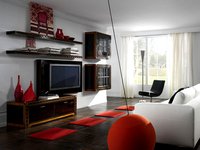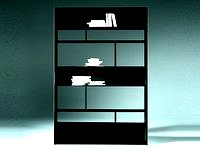► Domitilla Dardi / design historian
► In his Decorative Art, in 1924, Le
Corbusier writes about “machines for
sitting, for classifying, for lighting”.
Among the illustrations of the famous
essay, he uses a suspension of American
industrial production as an up-to-date
object, counter-posed to the nonsense
of the Deco lightings, so widely avail-
able at that time. He starts his battle
for the affirmation of a functional and
linear design, practical and versatile,
thanks to its long-lasting materials and
formal choices, that goes far beyond the
moods of decorative fashions. As for
furniture, the encounter with Charlotte
Perriand contributes to the definition
of objects that embody what the Master
already begun with his theories.
The nemo’s new editions tell a story
of lighting, without which modernity
would never become part of our daily
language. Lightings that bring to envi-
ronments an idea of light that reflects
the “new spirit”.
► Già nel 1924, nella sua Arte Decorati-
va, Le Corbusier parla di “macchine per
sedersi, per classificare, per far luce”.
Tra le illustrazioni del celebre saggio
utilizza una sospensione di produzio-
ne industriale americana come solo
oggetto all’avanguardia, contrapposto
all’insensatezza dei lampadari in stile,
ancora ampiamente diffusi all’epoca.
Inizia così la sua battaglia per l’afferma-
zione di un design funzionale e asciutto,
concreto e versatile, durevole nel tempo
per materiali e scelte formali, che vada
ben oltre i capricci delle mode decora-
tive. Come per gli arredi, l’incontro con
Charlotte Perriand porta alla definizio-
ne di oggetti che incarnano quello che
il maestro con le sue teorie aveva già
iniziato.
Le nuove edizioni di nemo raccontano
una storia di luce senza la quale la mo-
dernità non sarebbe entrata nel nostro
lessico quotidiano. Lampade che por-
tano negli interni un’idea di luce che è
riflesso dello “spirito nuovo”.
► En 1924 déjà, Le Corbusier parle dans
son «Art décoratif» de “machines pour
s’asseoir, pour classer, pour éclairer”.
Parmi les illustrations du célèbre essai
apparaît une lampe à suspension de
production industrielle américaine. Elle
est présentée comme un objet d’avant-
garde opposée à l’aberration des lampes
«de style» encore largement répandues.
Ainsi débute son combat pour un de-
sign fonctionnel et linéaire, concret et
polyvalent, durable par ses formes et
ses matériaux. Un design qui va bien
au-delà du caprice des modes décora-
tives. Comme pour le mobilier, la ren-
contre avec Charlotte Perriand conduit
à la définition d’objets qui incarnent ce
que le maître avait déjà évoqué par ses
théories.
Les nouvelles éditions de nemo ra-
content une histoire de la lumière sans
laquelle la modernité ne serait pas en-
trée dans notre quotidien. Les lampes
de Le Corbusier et Charlotte Perriand
amènent dans nos intérieurs cette idée,
reflet de l’«esprit nouveau».
POTENCE PIVONTANTE
Charlotte Perriand, 1938
on this page
Potence Pivotante produced
by nemo - CLS Architects,
Zurich - Ph. Delfino Sisto
Legnani.
opposite page
The long perch at
Le Corbusier Apartment,
rue Nungesser et Coli, Paris.
© ph. Olivier Martin-Gambier - FLC/ADAGP.




